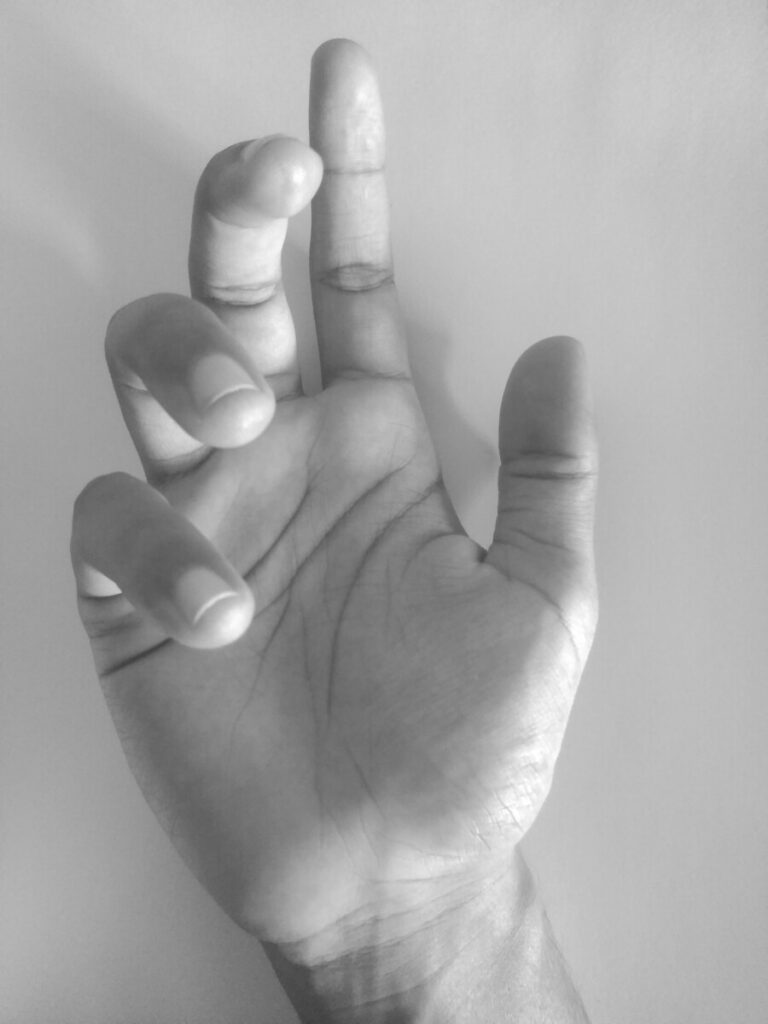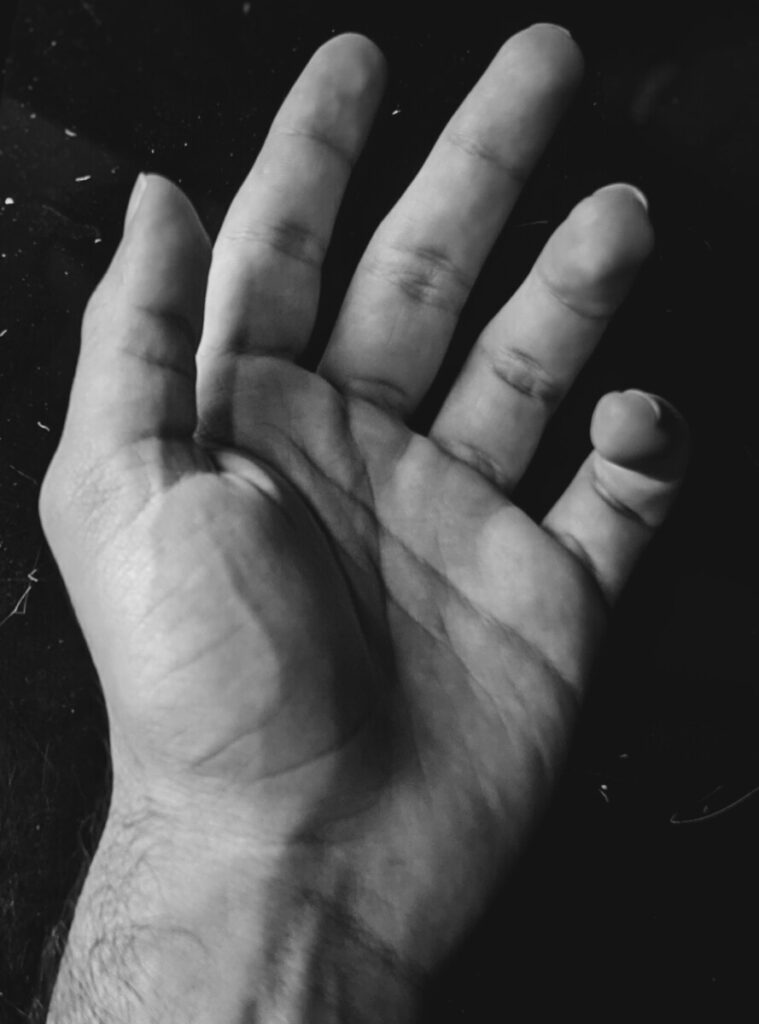Table of Contents
Project Overview – Slides PDF
Theme: Experiment with lighting and shapes
Problem: Create black and white portraits that convey a mood or feeling using the rule of thirds, stable figure ground and a clear focal point.
Limits: Use a narrow value range in low (dark) key; achromatic grays
Materials: Sketchbook, pencils, Bristol Board 9×12″, acrylic paints, brushes, palette, rags, water container, photoshop
Concepts: Value, grayscale, achromatic, focal point, contrast, shadow, highlight, narrow value, broad value, high key, low key, open-value composition, closed-value composition, Rule of Thirds
Technical Skills: thumbnail sketching, painting techniques, digital tools
Student Examples
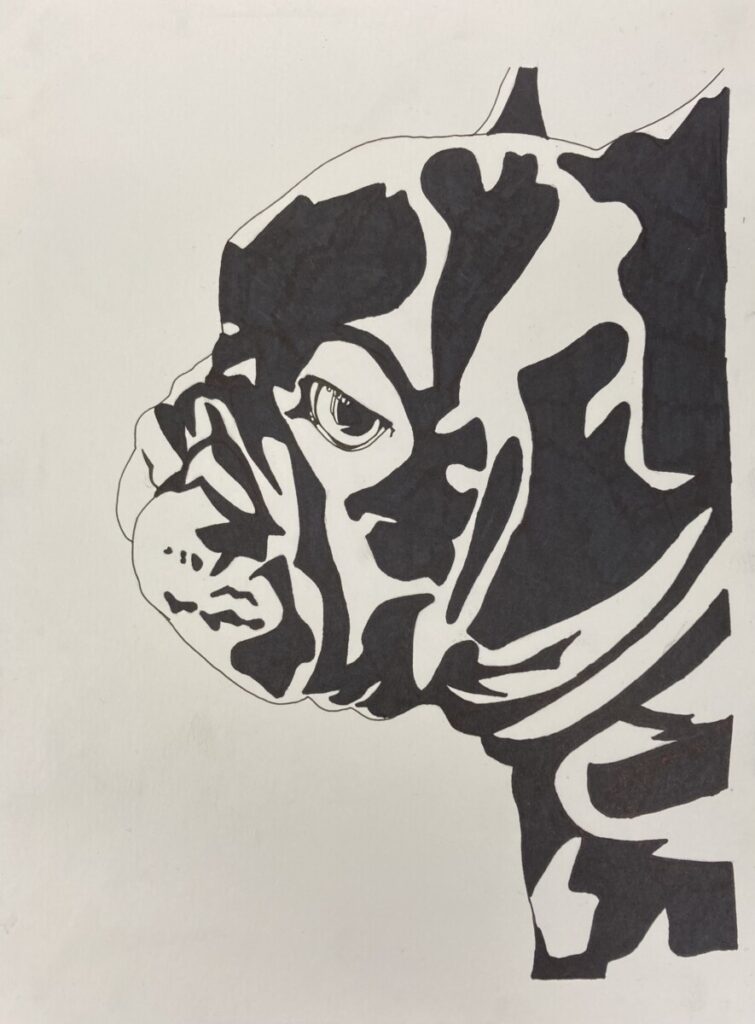
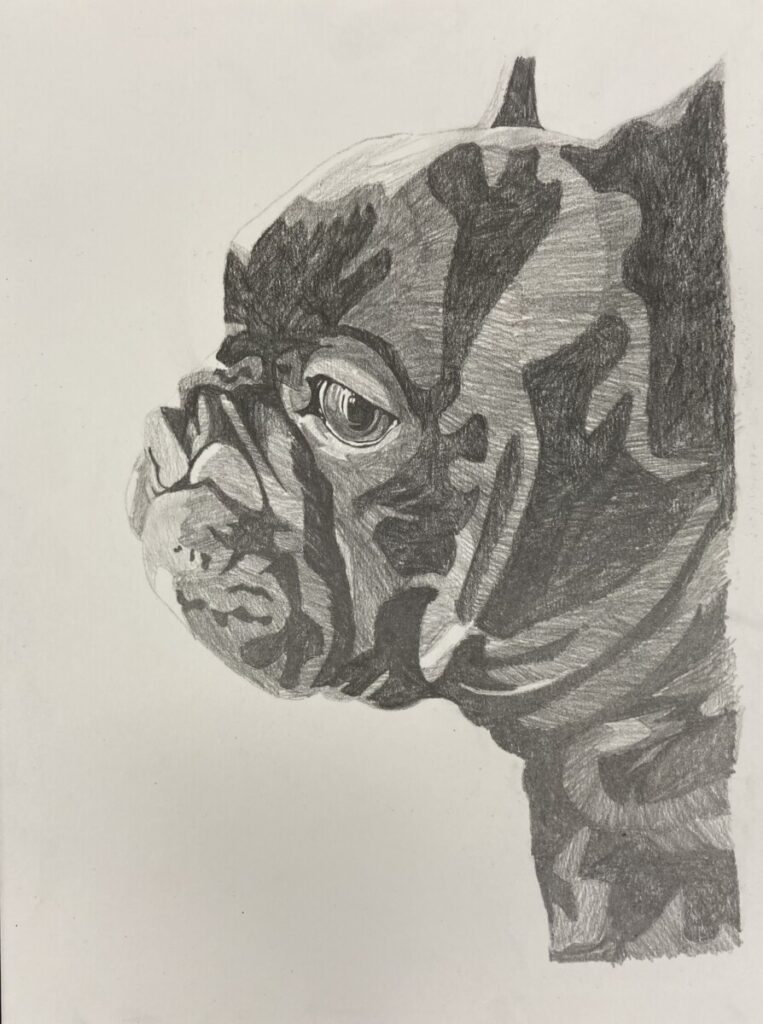
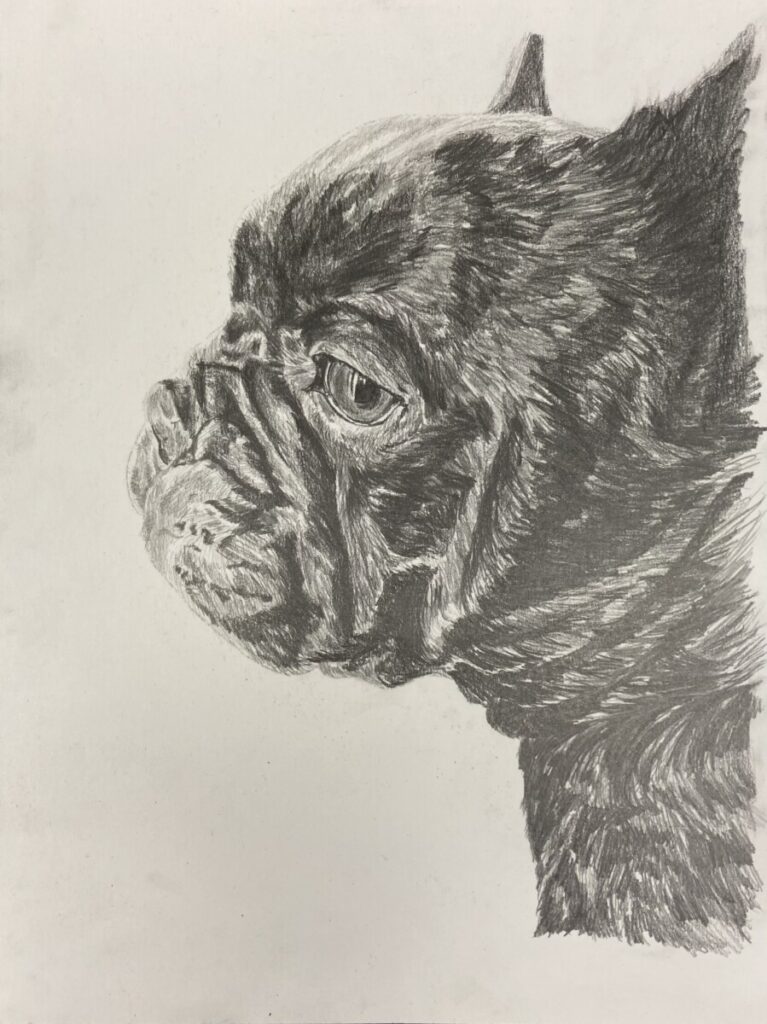

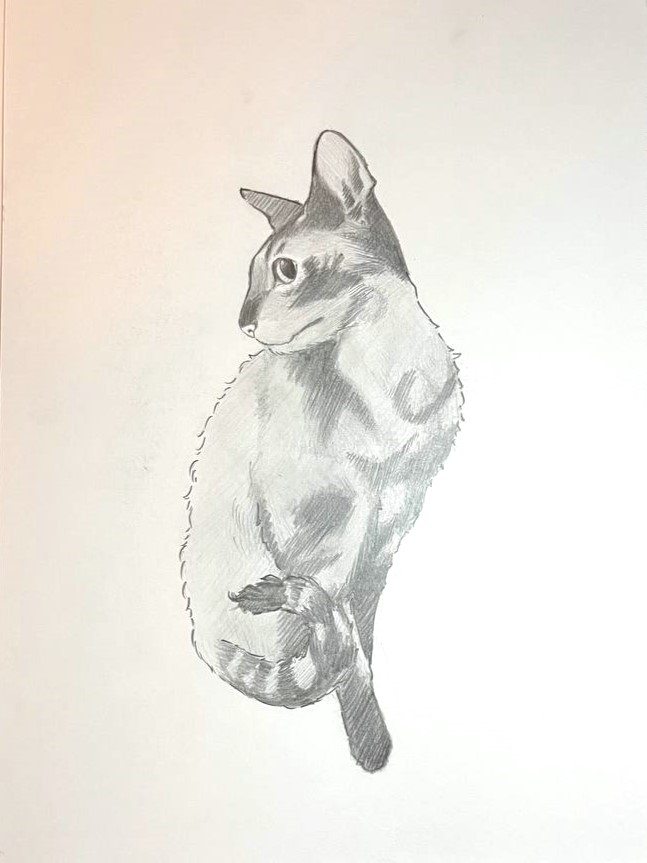
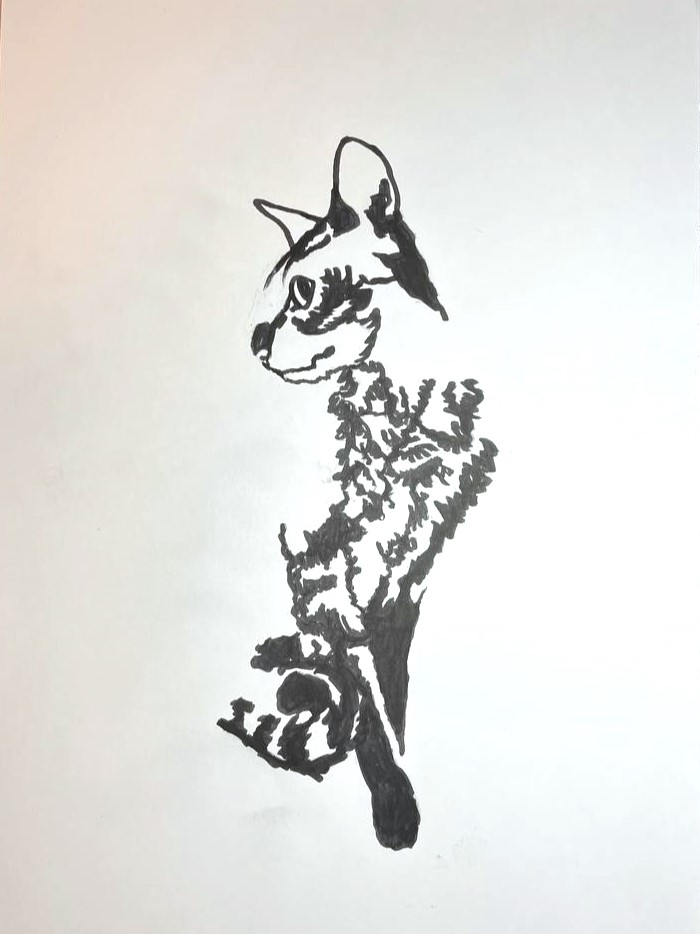
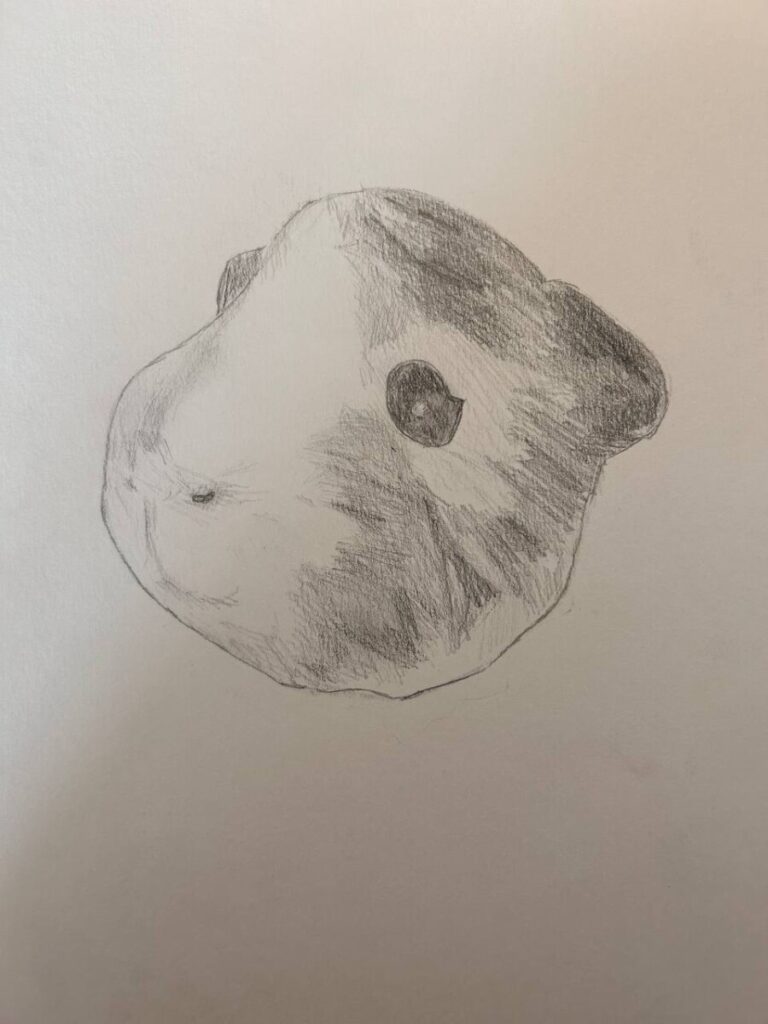
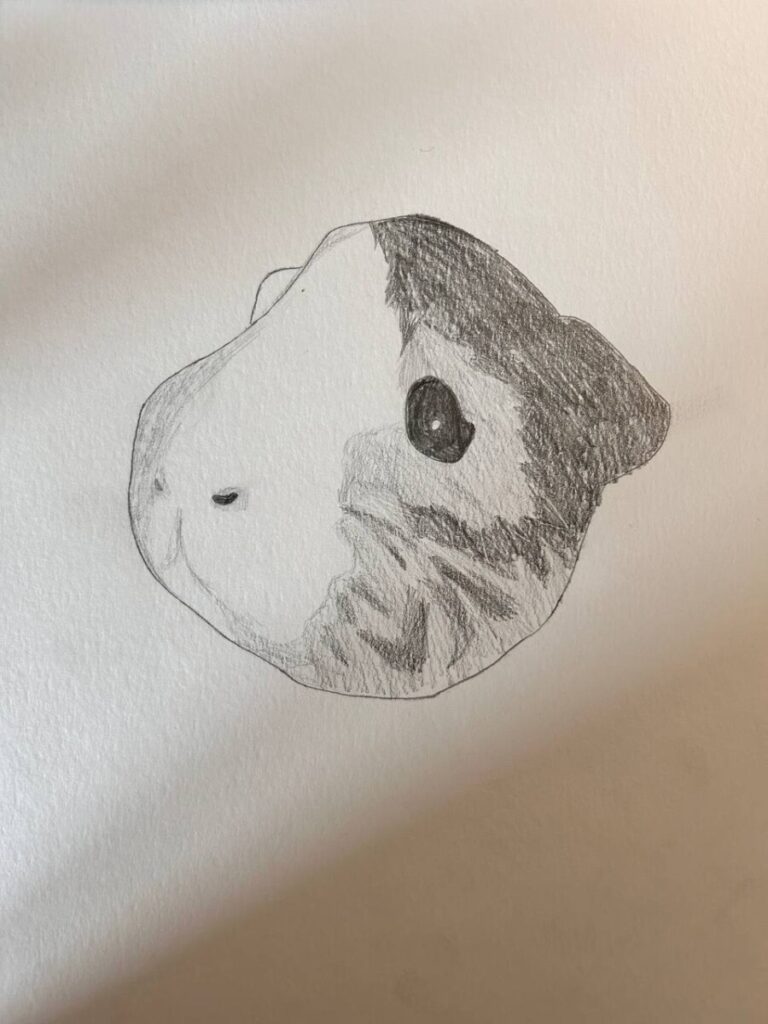
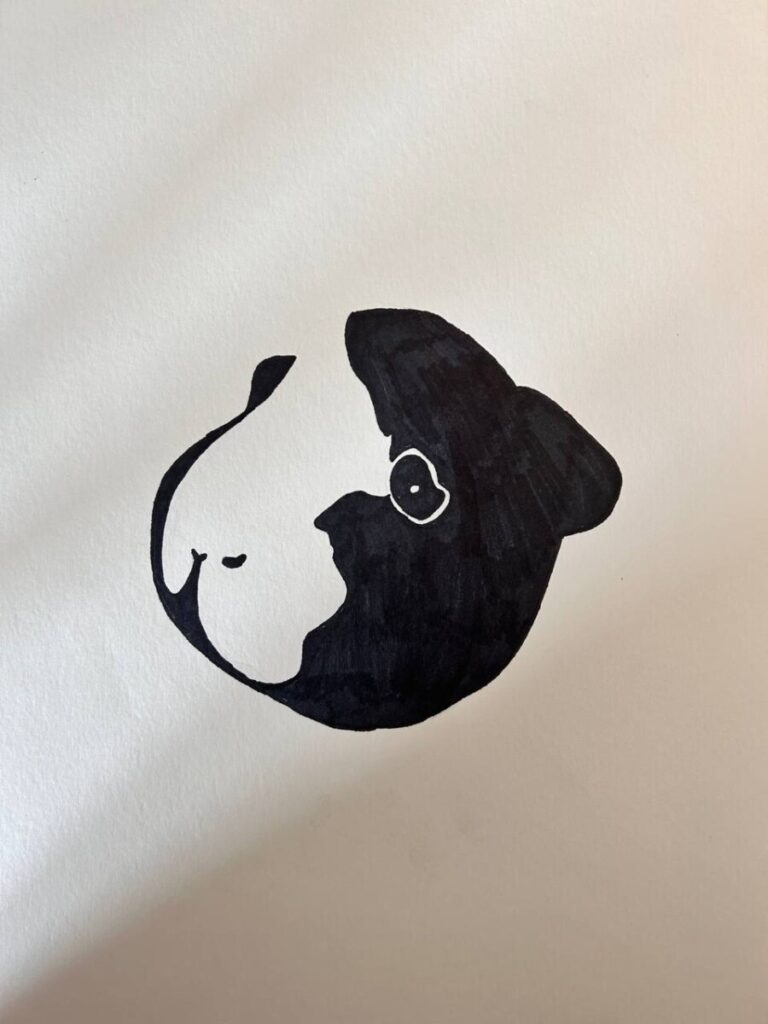
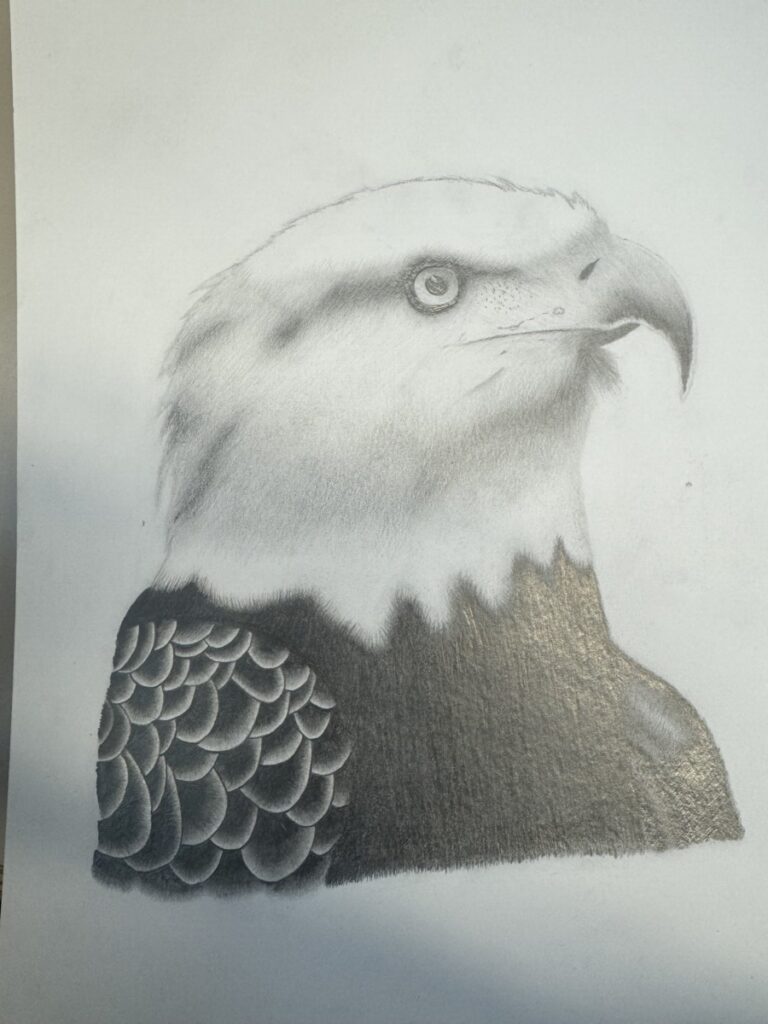
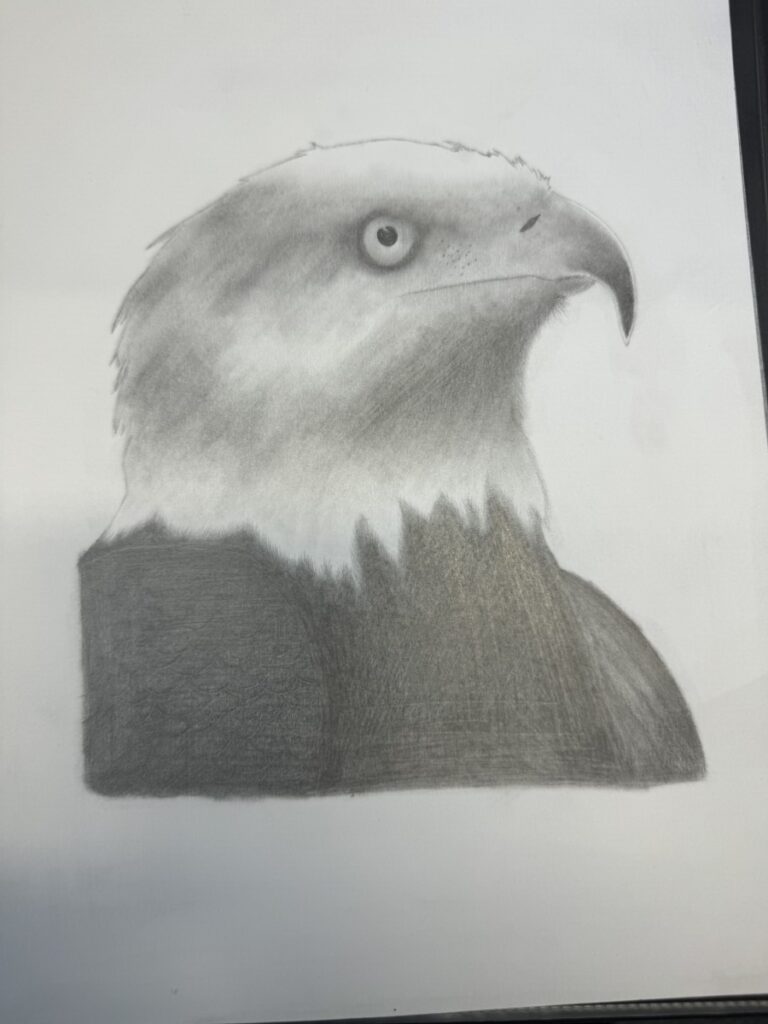
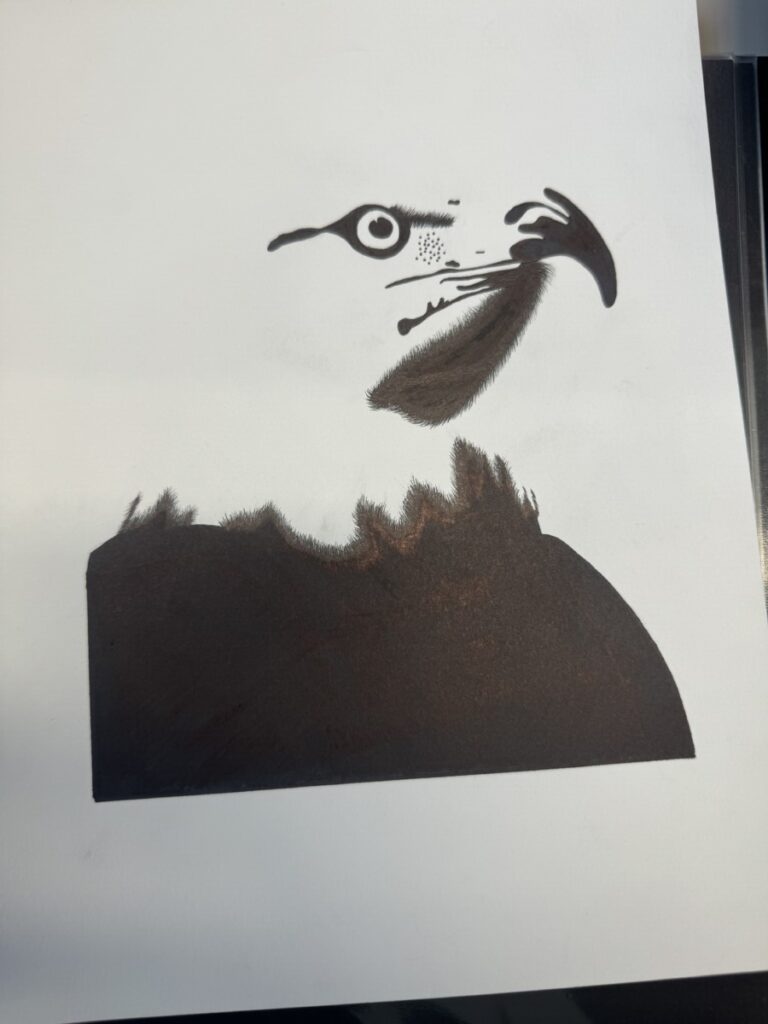
Learning Outcomes
For the successful completion of this project, you should be able to:
- Choose images that have different compositions and concepts.
- Understand value and be able to create contrast.
- Demonstrate an understanding of composition and recreate your own grayscale.
- Demonstrate attention to detail and craft using graphite pencils
- Share each phase of the design process by posting to the class site and providing critical supportive feedback to classmates.
Grading Rubric
Each project will be graded using the Project Rubric. Complete each part of the design process, following the due dates provided in each class meeting agenda.
Design Process
- Discover: Animal Logos & Value pratice
- Define: Black and White Animal Photos
- Develop: Posterize and Sketch
- Deliver: Post and Comment
1. Discover
Research: Famous logos featuring animals
Animals are a popular brand mark for many companies to use in their logo. They can be used to depict a number of different traits and personalities, and different animals can reflect different values. Historically, animals have a lot of significance to humans. Animals were believed to be deities in many cultures, and our high regard of animals has continued into the modern world. As a society, we love animals – we have them as pets, visit them in zoos and wildlife parks, and continually watch shows and films that feature them.
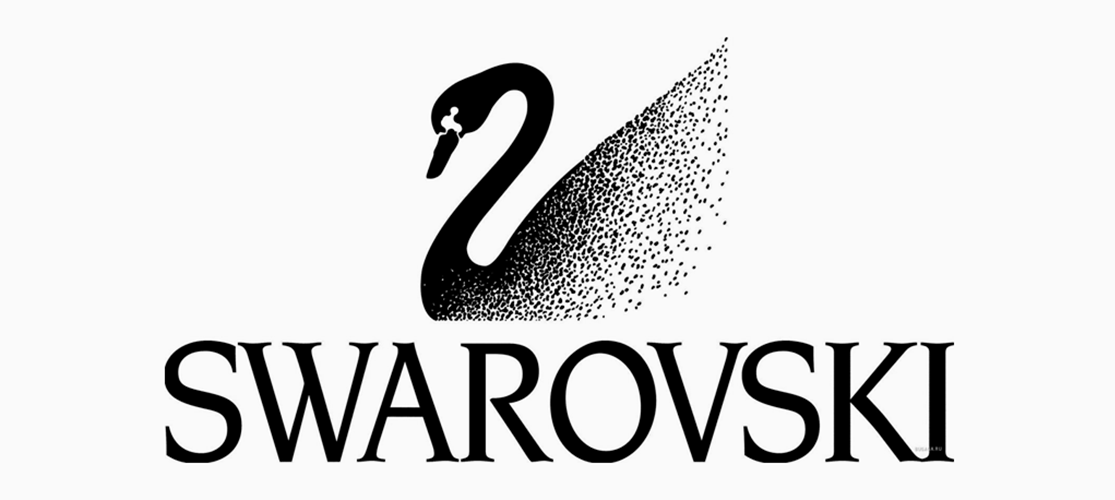


Symbolism in animal logos
Animals communicate different features and traits that can represent your brand, so it is important to choose an animal that symbolises the characteristics that you want your customers to associate with your brand.
For example, many people associate foxes with being cunning and sly, so that may not be the best choice for your company if you want to build trust with your customers! Similarly, if you want to highlight your fast customer service, a cheetah may be a better choice of animal than a snail or a tortoise.
- Using a camera or camera phone*, compose photographs of your hands with the following value ranges:
- (1) narrow value range / light – predominately light end of the grayscale
- (1) narrow value range / dark – predominately dark end of the grayscale
- (1) broad value range – spread across the grayscale (dark, middle, and light).
- If you have the ability to shoot with a grayscale, black & white, or noir filter, please do.
- Try to create an expression of feeling by how you hold your hand.
- Allow the value range: light, dark, broad to affect the mood.
* If you don’t have a camera, please partner with another student who does.
Value Scale
Complete the Achromatic Value Scale using a range of pencils (2H-5B)
- On the handout provided, complete the four scales starting with 2-step (black/white) and ending with 9-step.
- Your 9-step value scale should have black, low dark, dark, high dark, mid-value, low light, high light, and white.
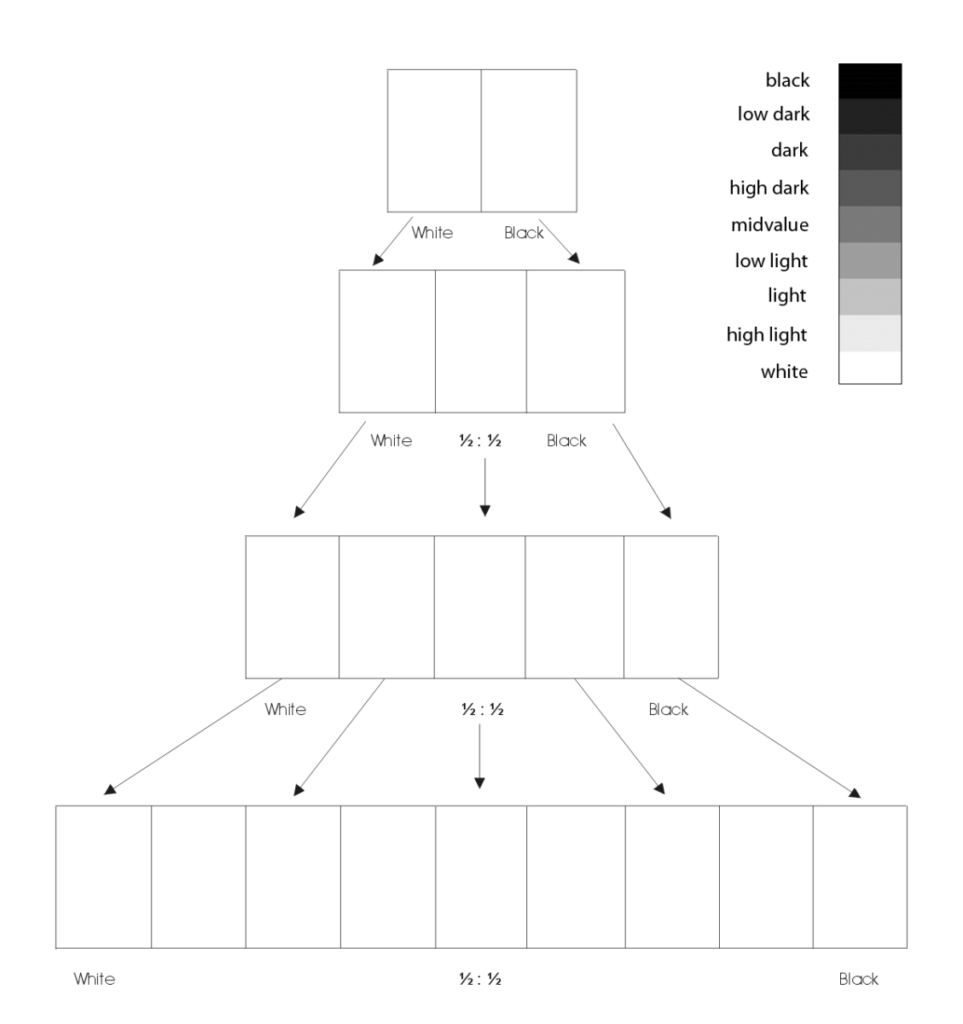
Understanding PENCIL GRADES – What you NEED to know
BEGINNER’S Guide To GRAPHITE Pencils
2. Define
Vocabulary
- Value: Signifies the relative differences of light and dark
- Achromatic Value: Value with the absence of hue (color).
- Grayscale: The full range of values simplified into a graduated scale.
- Narrow Value Range: When the values congregate around the dark (low-key), middle (middle-key), or light (high-key) part of the grayscale.
- Broad Value Range: When the values are spread over the dark, middle, or light part of the grayscale.
- Shadow: Dark area of an object as a result of a disruption of the light source.
- Highlight: Portion of an object that receives the greatest amount of direct light
- Contrast: Occurs when elements are unrelated or dissimilar in value, size, shape, etc.
- Gradation: Occurs when elements incrementally (slowly) change in value, size, shape, etc.
- Chiaroscuro/Tenebrism: Forceful use of contrasting lights and darks, creating a dramatic mood.
- Film Noir: a cinematic term used to describe a visual style that emphasizes low-key lighting and unbalanced compositions.
- Focal Point: The elements or objects on which the viewer’s attention is focused.
- Rule of Thirds: A compositional guideline; an image is divided into nine equal parts by two equally spaced horizontal lines and two equally spaced vertical lines. Important compositional elements should be placed along these lines or their intersections to create tension, energy and interest, rather than simply centering the subject.
Black & White Values
Choose 5 black and white animal photos that give a distinct mood using both strong contrast and gradation of light and dark and a stable figure-ground relationship. Utilize the Rule of Thirds to create tension or energy in the composition. Consider the character(animal), tone and expression of the image. What feeling is generated or communicated to viewer?
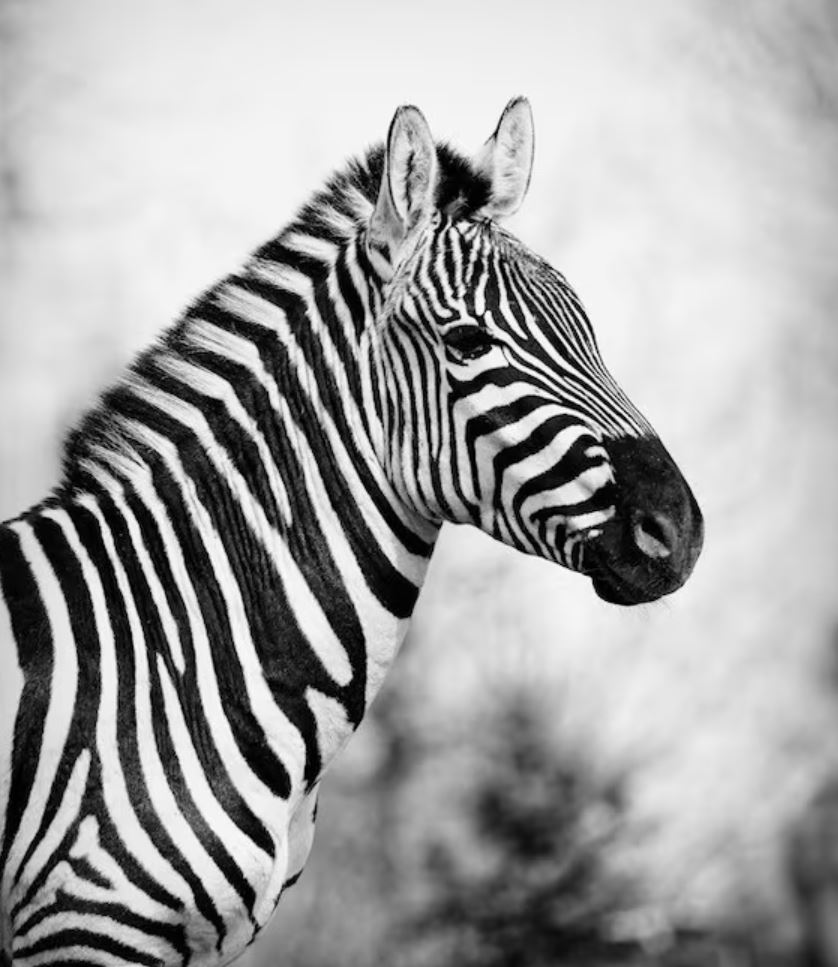

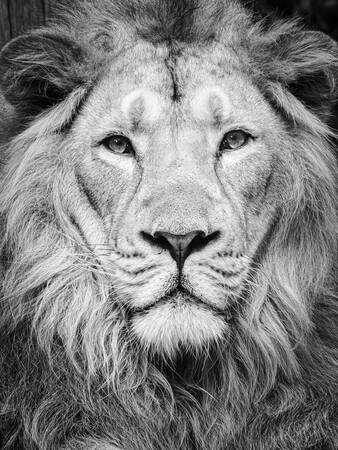
Prep
Follow the “How to Posterize an Image” post here with your selected photo.
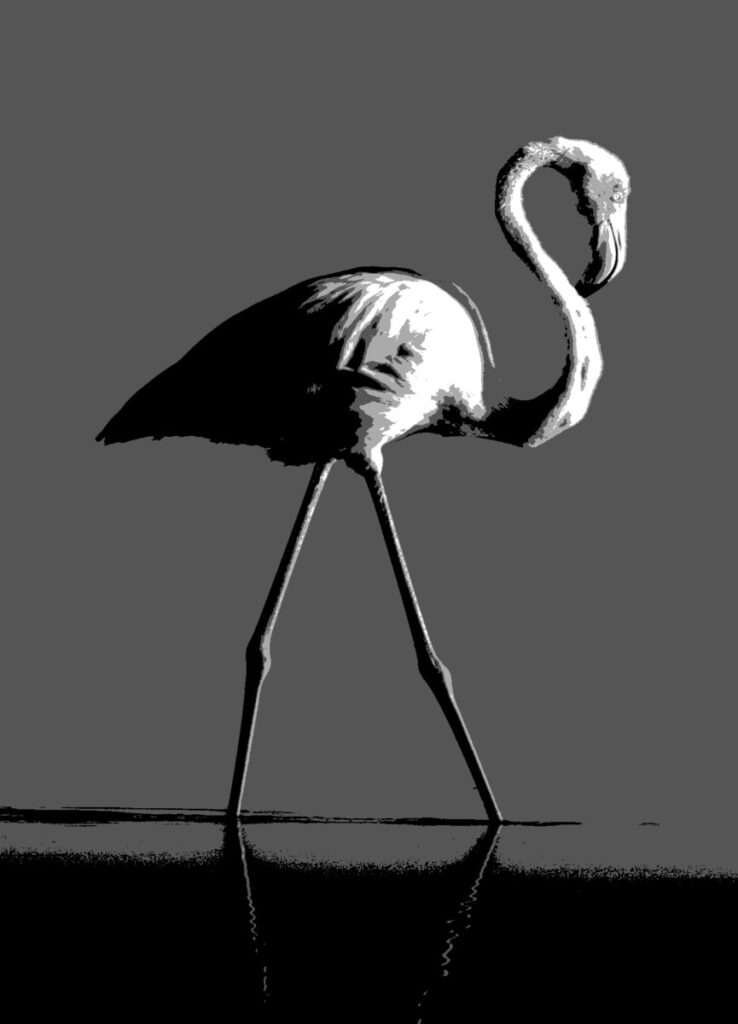

3. Deliver
Transfer to Bristol
- Using your posterized portrait printout, trace the outlines of the posterized lights, darks and midtones to a piece of tracing paper using a inking pen (.2 or .5).
- Then use the inked tracing paper and light table to transfer to bristol using a very light pencil.
Copy value shapes to tracing paper in ink
 Bristol over trace, tape to window
Bristol over trace, tape to window Trace to bristol in pencil
Trace to bristol in pencil
Repeat this 3 times so that you have ne with realistic values, one with 4-5 values, and one with 2 values (black and white).
Sketching on Bristol
- With your posterized printout as a visual reference, draw each value area using a range of black, white, and gray values. Use your Value Scale as a guide for matching value steps.
- NOTE: Test your pencils for value range in your sketchbook
- When you have completed your composition carefully protect all elements with a piece of clean tracing paper.
Drawing Tips
- Do not worry about accurately rendering an eye, nose or ear, see/think only in terms of value and the boundaries of each value relationship.
- Start with light values and build your way up to darker values. It’s harder to erase to lighter if you start with darker values.
- Use a piece of paper to protect your image and hand as you work.
- Notice how some values crossover shape boundaries into adjoining areas (open-value), while others are limited by the edges of the shape (closed-value).
- Remember protect your drawing with tracing paper as you work. Graphite will smudge.
How to Draw Realistic Fur for Beginners
4. Document
When you are finished, scan your artwork using the available scanner in the classroom or computer labs. Or take a well lighted, well composed photograph. This image will be uploaded to class blog for critique and grading.
Use this guide to avoid common mistakes when photographing your work with a camera phone.
4. Deliver
Submitting in your work
Follow the How to Post Your Work guidelines and include the project-specific details below:
- Post Title: Black & White Values
- Written Project Reflection: Document your thoughts about this project. Think about what you learned, what you could have done better (planning, material use, craft), and how you will apply what you learned to your next project. Consider and respond to the comments made in class during the critique.
- Images: Organize your post to include all images from the three other Design Process phases for this project. (Discover, Define, Develop).
- Category and Tags:
- Category = Project #3 Posts
- Tags = Deliver, Value Portrait
Providing Feedback
Part of your Project grade is leaving well-written comments for your peer-critique partner and at least one other student. Follow the How to Comment and Critique guide for specific guidelines for leaving constructive feedback.
REMINDER: You will receive a grade and comments from the Professor on your posts and peer comments. Without your deliver post, you will not receive a grade.
Critique
- Bring all parts of this project to class: Discover, Define, Develop.
- When presenting your work, start with following: your name, the project title, the theme of the project, what you feel you did successfully, what you can improve on next time.
- Your peers and the professor will provide supportive, constructive feedback.
- You will have an opportunity to revise your work based on the feedback and improve your work and your grade.
